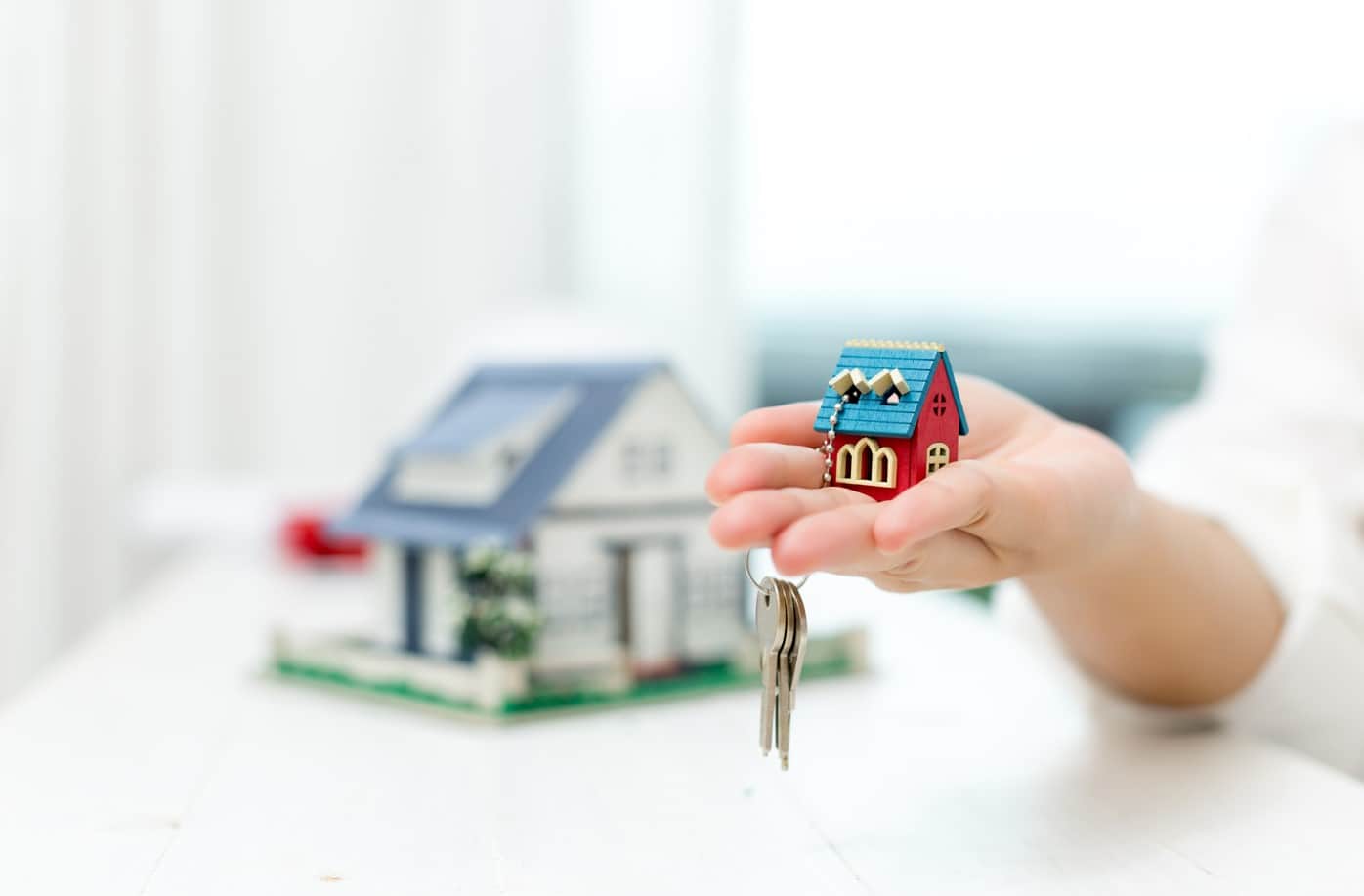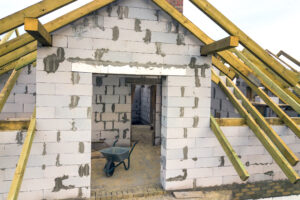You bought a stunning house in Australia for a decent down payment amount and mortgage; now you want to sell it.
Reasons can vary, but you are desperate to sell it, but you have no idea whether or how you can sell a mortgaged house and the situation of your mortgage when you sell it.
Here we share data from the Australian Bureau of Statistics survey performed in 2018; amongst 67% of the homeowners in Australia, 37% are mortgage homeowners, while 30% are mortgage-free.
As you, too, fall in 37%, we share how you can sell a house with a mortgage, the fees involved in selling a mortgaged house and the steps of selling your home.
We are sure the information will add insight to your mortgage home selling process.
How does the mortgage work for the Australian home?
Home loans require your lender to place a mortgage on your property. They own legal interest in the property, as this appears on the title. In the event of nonpayment, you can also sell the house to recoup the amount you owe.
A lender also loses its right to sell a property when you sell it and no longer own it. You usually repay the money you’ve borrowed to these people in exchange. That’s called a discharge of a mortgage, which you need to settle before selling it to the new owner.
Traditional mortgage: Can you sell your house if you still have a mortgage?
When your property sells, you should be able to cover your closing costs, repay the loan balance, and make a profit.
After the buyer pays off their funds at closing, you receive your remaining loan balance and any closing costs. When you sell your home shortly after buying it, ask your lender if there’s a prepayment penalty.
So before selling the property with a mortgage, find out the remaining dues of the property. You can get the information of finding the re-payment amount just below.
How do you determine if the mortgage remains before selling the mortgaged property?
You can determine how much you owe on your mortgage by knowing how much you have paid off. Contact your lender by phone or online to determine your payoff for the mortgage on the house.
Payoff amounts are not the same as the remaining loan balances in your monthly mortgage statements.
It includes interest at closing, which makes the payoff figure more accurate. Getting an estimate of your home sale profit can help you estimate your earnings even if you’re a few months away from selling.
It may take your lender 30 days to give you a payoff quote. So, start early to understand the mortgage dues.
How long will the mortgage discharge process take place?
Can you sell your house if you have a mortgage? Yes, you can, but you need to settle the mortgage amount before that.
Because the lender cannot use your property to recoup funds, you will need to repay the mortgage in full if you sell.
It’s not uncommon for lenders to take a long time to process discharge requests when you leave them. Since they take longer to complete the discharge process, you are paying more interest.
It is pretty simple to discharge your lender: you complete the lender’s discharge authorization form, present it to your lender or conveyancer, and then wait for the outcome.
You can now sell your property upon deciding the final payout figure and paying off the loan.
What is the process involved in mortgage discharge?
Mortgage lenders must record their interest in a property on the property title whenever you take out a mortgage to buy a home.
A mortgage discharge occurs when the mortgage is fully paid, and the lender no longer holds any equity interest in your property. You must do the following:
- You must complete and sign a discharge form during the settlement process.
- If you submit this to your lender, it may take up to three weeks for the application to be processed.
- Settlement is coordinated directly between your lender and conveyancer or solicitor.
- When your mortgage is discharged, the lender notifies the Land Titles office,
- It will not show the lender’s interest in the title anymore.
What fees are involved in selling a house with a mortgage in Australia?
There can be several fees associated with selling a property with a mortgage. A few of the known ones are listed below:
Documentation fees: Your mortgage lender charges a fee for preparing settlement documents.
Real estate fees: This includes commissions, advertising, and additional services your agent provides.
Break fee: This only applies to fixed-rate mortgages.
Utility rate: You should also pay any unpaid fees related to council rates and utilities.
Conveyancer fees: Fees associated with transferring titles of property.
Discharge fee: A fee charged to you by the lender for discharging your mortgage.
Settlement agency fees: If you settle online or in person, your lender will charge an agency fee.
What processes are involved in selling a house with a mortgage?
Your lender will typically discharge the mortgage before settlement occurs when you sell your home.
The process involved in selling a mortgage home are:
- By submitting a discharge form to your lender through your solicitor or conveyancer approximately one month before your settlement date in your contract, you will inform your lender that you are repaying the loan.
- You can expect the lender to process your discharge request within 2-4 weeks. You must make arrangements with your solicitor or conveyancer to be present at the settlement. If they are owed money from the sale proceeds, they will arrange to receive it.
- Land Titles offices in your state or territory will record the mortgage discharge to show the lender no longer holds a mortgage on the property.
- You should submit your new mortgage application at the same time as your new home loan application from the same lender to streamline the process.
- There are no complexities to this process, but you should allow enough time for your lender to complete the application to feel confident that all will be sorted by settlement day.
Reverse Mortgage: How easy is selling a house that has a reverse mortgage?
Reverse mortgages are loans that enable retirees and pensioners to access the equity in their homes to pay for things such as aged care fees, home renovations, and additional income.
The registered mortgage over the property is also used to secure a reverse mortgage, as with the conventional home loan. It depends on the value and age of the property and how much equity can get unlocked.
So how do you sell a house? With a reverse mortgage, the borrower can sell their property anytime they choose, just like with a traditional mortgage.
Reverse mortgage loan balances must be repaid when a borrower sells their home and their loan account is closed by their lender. The borrower keeps any remaining equity.
What is the process of selling a house having a reverse mortgage?
Selling a house with a reverse mortgage is like any other type of home, but there are some differences.
Here’s an outline of what the process might look like:
- If you have received any money from your reverse mortgage thus far, the interest you have been charged, and any other lender fees, contact your lender and confirm how much you owe on the reverse mortgage loan. Make sure there are no additional fees. Ask for a written payoff estimate.
- The sales process can be aided by a real estate agent, though it is not necessary.
- Advertise the property for sale.
- If you wish to ensure that the total amount of your reverse mortgage is paid, you may consider hiring a real estate lawyer.
- If you sell your house, ensure your reverse mortgage account is closed and your loan is repaid in full. Any remaining funds may be kept.
- When borrowers know the few differences, they are prepared to sell the home like any other mortgaged property.
How can we sell and buy a house simultaneously with a mortgage?
Selling and buying a house simultaneously with a mortgage can be accomplished in three ways: By extending settlement periods, subjecting the purchase to the sale, or applying for a bridge loan.
When buying or selling a house before taking care of the mortgage, the most common scenario for buyers and sellers is to buy first and sell second, which could result in paying two mortgages – or sell first and buy second.
The cost of buying and selling a house in such situations will result in a hasty purchase, two moving days, and thousands of dollars of rental costs.
Does selling a house with a reverse or traditional mortgage affect the property value?
One way to make money on your home sale is to sell it for more than what you owe on your mortgage. This can then be used to buy another home or as a deposit.
Having negative equity means your home is worth less than the value of your mortgage. It can be caused by over-leveraging your mortgage by taking on too large a loan-to-value ratio (LVR).
After selling their property, many homeowners purchase a new property.
At the same time, you will apply for a new mortgage during the sale settlement period, and your mortgage will get discharged.
On selling your home, the lender releases its interest on the title, registering an interest in the title of your new home in its place.
What are the options for transferring a mortgage to the new property?
When you apply for a mortgage, some lenders allow the portability of home loans. The lender’s interest is transferred to the title of your new property when you sell, so you keep your existing loan. You are referred to as substituting security here.
Can you sell your house if you still have a mortgage? Yes, you can, but you still have the option of transferring the mortgage to the new property.
It may be necessary to increase your mortgage or contribute additional funds based on the price of your new home, which evaluates the cost of buying and selling a house.
You may receive some of the proceeds from selling a less expensive property than your current one, or you may have your home loan balance significantly reduced if you downsize.
Your loan needs may be met better by a product with a lower rate or that is more competitive. When switching loans during a fixed-rate period, it is advisable to determine whether the benefits of the new loan product outweigh the negative consequences.
How to sell your house? Quick steps to sell your house!
What is the fastest way to sell your house?
A home should be listed within 3 weeks of being put on the market if you want to sell it quickly. Potential buyers will likely consider your house difficult to sell and attribute it to damage to the property.
Start your marketing on a strong note and sell as soon as possible if you want the highest price for your property.
7 Quick selling steps to sell your house even with a mortgage
The best way to sell my home is to price it correctly, market it well, and present it well. The three things listed above will help you succeed from the very beginning.
You should be able to achieve a quick sale if you follow the following tips, especially if you do so at the right time.
It may be possible to get a deal with these simple, cost-effective tips in just a few days if everything works perfectly to sell my property.
- Make your house look presentable with proper housekeeping.
- De-clutter the nook and cranky space for organizing the house.
- Scrub the important aspects of the property, such as windows, floors, and vents.
- Give a quick repair and maintenance before selling the house (revitalizing the floors, giving fresh paint to the carpet).
- Improving the property’s exterior space (e.g., giving a fresh appearance to your lawn or garden area).
Apart from the tips and suggestions given above regarding selling a mortgage home in Australia, you can take assistance from Metro Homes.







